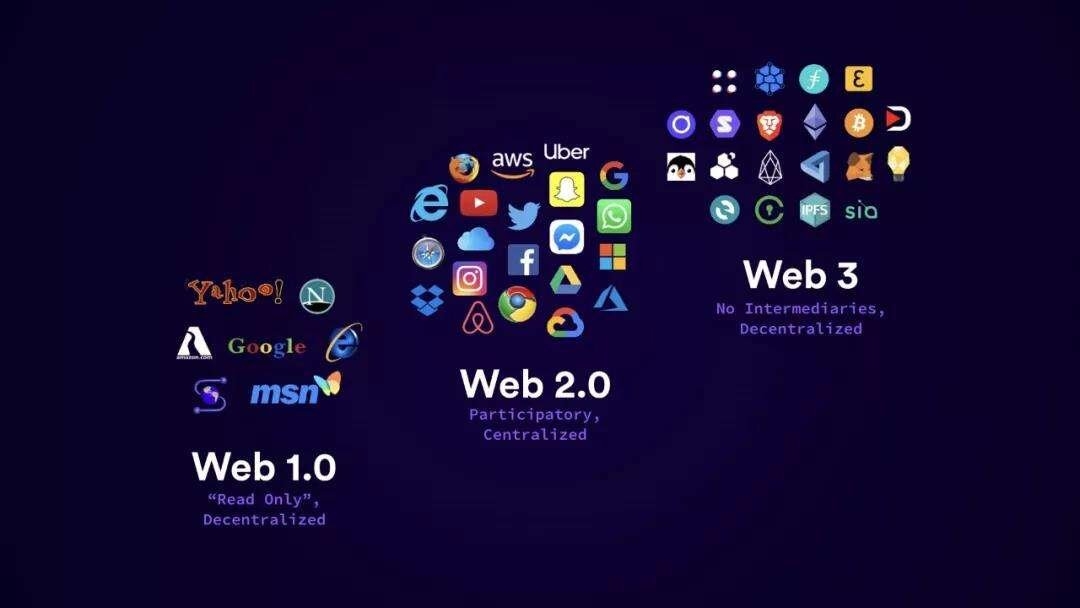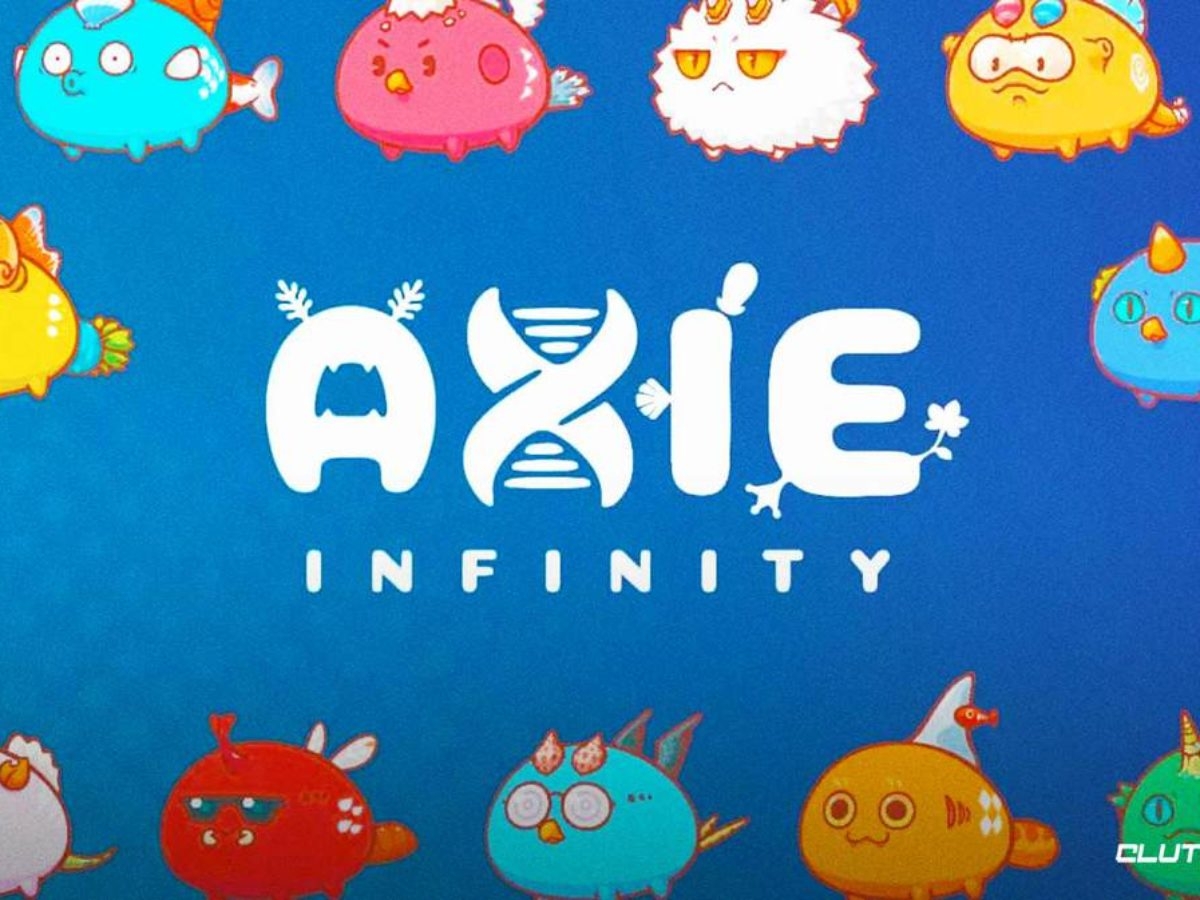What is Web3 - The Future of The Internet
 |
| What is 'Web3' - The Future of The Internet? |
To believers, Web3 represents the next phase of the internet and, perhaps, of organizing society. Web 1.0, the story goes, was the era of decentralized, open protocols, in which most online activity involved navigating to individual static webpages. Web 2.0, which we’re living through now, is the era of centralization, in which a huge share of communication and commerce takes place on closed platforms owned by a handful of super-powerful corporations—think Google, Facebook, Amazon—subject to the nominal control of centralized government regulators. Web3 is supposed to break the world free of that monopolistic control.
At the most basic level, Web3 refers to a decentralized online ecosystem based on the blockchain. Platforms and apps built on Web3 won’t be owned by a central gatekeeper, but rather by users, who will earn their ownership stake by helping to develop and maintain those services.
What is Web3: Read-Write-Own?
Web3, unlike its predecessors, Web 1.0 and Web 2.0, is based on peer-to-peer (P2P) decentralized networks, such as blockchain.
Blockchain is a hallmark building block of cryptocurrency, and Web3 is a product of both. Web3 developers create apps that aren't limited to a single cloud server but are instead distributed on a blockchain or decentralized P2P network that isn't controlled by a central authority.
In simpler words, Web3 is similar to how most cryptocurrencies work based on the blueprint of Bitcoin.
How does this differ from the existing Web 2.0? While Web 2.0 is user-centric (most of the content is user-generated), Web3 has taken this approach to the next level by introducing more autonomy and keeping things more transparent and relatable. In Web3, computers are heavily involved in interpreting information on a human level.
Web3 has many additional attributes that distinguish it from Web 2.0 — it's verifiable, self-governing, permissionless, distributed, stateless, and has built-in payment systems (cryptocurrency).
This lack of transparency and verification led to Web 2.0 containing too much content and information, most of which isn't helpful for general users. Its security is also sub-par, which is why there are too many hackers today and a marked increase in identity theft and other cybercrimes.
Any application built on Web3 would be developed and owned by the users as they help create and maintain the app, earning their stake along the way. This is just how Bitcoin operates, as miners of the currency earn Bitcoins when they facilitate transactions through computing operations.
The apps on Web3 are called "dApps," which is short for "decentralized applications." You can expect to hear this term more often in the near future.
An effective Web3 developer is one who is familiar with the concept of Web3, is proficient in the relevant programming languages, and has the right tech stack to back their development work.
Web3's key terms and tech
 |
| Photo: mach37 |
Blockchain is a key technology behind Web3. It is most-often associated with the cryptocurrency bitcoin and is the technology that underpins it. The bitcoin blockchain is a public ledger of activity of the bitcoin network. But bitcoin is not owned by a single company or person and it is not issued by a central authority like a central bank. Instead, it is decentralized and the network is maintained by a global group of people running specialized computers.
So blockchain is a key technology and decentralization an important phrase.
Web3 is based on the idea of a "trustless" model. Right now, we have to trust companies to deliver the service they promise. But if Web3 products and services are built on blockchains and are decentralized then you'd only have to trust the underlying algorithm to deliver that product.
That carries its own risks of course.
What are the benefits of Web3?
Many Web3 developers have chosen to build dapps because of Ethereum's inherent decentralization:
- Anyone who is on the network has permission to use the service – or in other words, permission isn't required.
- No one can block you or deny you access to the service.
- Payments are built in via the native token, ether (ETH).
- Ethereum is turing-complete, meaning you can pretty much program anything.
What are the limitations of Web3?
Web3 has some limitations right now:
- Scalability – transactions are slower on web3 because they're decentralized. Changes to state, like a payment, need to be processed by a miner and propagated throughout the network.
- UX – interacting with web3 applications can require extra steps, software, and education. This can be a hurdle to adoption.
- Accessibility – the lack of integration in modern web browsers makes web3 less accessible to most users.
- Cost – most successful apps put very small portions of their code on the blockchain as it's expensive.
Web 3.0 and Web 2.0
Web 2.0 refers to websites and applications that utilize user-generated content for end users. Web 2.0 is used in many websites today, chiefly focusing on user interactivity and collaboration. Web 2.0 also focused on providing more universal network connectivity and communication channels. The difference between Web 2.0 and 3.0 is that Web 3.0 is more focused on the use of technologies like machine learning and AI to provide relevant content for each user instead of just the content other end users have provided. Web 2.0 essentially allows users to contribute and sometimes collaborate on site content, while Web 3.0 will most likely turn these jobs over to the semantic web and AI technologies.
What web1 and web2 were?Web1, in the traditional telling, refers to the internet of the 1990s and early 2000s. It was the internet of blogs, message boards, and early portals like AOL and CompuServe. Most of what people did on web1 was passively read static web pages, and much of it was built using “open protocols” like HTTP, SMTP and FTP. (Don’t worry about what those things are — just know that an open protocol is a piece of web infrastructure that isn’t owned by a single company, and that the concept of open protocols is going to reappear a few sentences from now.) Web2, the story goes, was the next phase of the internet, starting around 2005 or so — the one characterized by social media behemoths like Facebook, Twitter and YouTube. In web2 (or Web 2.0, as it was usually called then), people began creating and posting their own content, actively participating in the internet rather than passively reading it. But most of that activity ended up being distributed and monetized by big companies, which kept most, if not all, of the money and control for themselves. |
What’s an example of a web3 app that exists today?
 |
| Photo: clutchpoints |
An oft-cited example is Axie Infinity, a video game developed by the Vietnamese game studio Sky Mavis, which uses NFTs and Ethereum-based cryptocurrencies to reward players with real money for achieving in-game objectives.
In the game, players can “breed” characters called Axies, and use them in battles against other players. They can also collect virtual land, in the form of NFTs, and earn a type of digital money called Smooth Love Potion, or SLP, which can be traded on a cryptocurrency exchange. (In an article last year, the writer Casey Newton called it “Pokémon on the blockchain.”)
Axie Infinity has attracted millions of players, including a number of people in the Philippines who make a full-time living from playing the game. But the game’s reliance on crypto tokens makes it volatile, and players can lose money if token values drop, as happened last year.
Why is Web3 important?
Although Web3's killer features aren't isolated and don't fit into neat categories, for simplicity we've tried to separate them to make them easier to understand.
Ownership
Web3 gives you ownership of your digital assets in an unprecedented way. For example, say you're playing a web2 game. If you purchase an in-game item, it is tied directly to your account. If the game creators delete your account, you will lose these items. Or, if you stop playing the game, you lose the value you invested into your in-game items.
Web3 allows for direct ownership through non-fungible tokens (NFTs). No one, not even the game's creators, has the power to take away your ownership. And, if you stop playing, you can sell or trade your in-game items on open markets and recoup their value.
Censorship resistance
The power dynamic between platforms and content creators is massively imbalanced.
OnlyFans is a user-generated adult content site with over 1-million content creators, many of which use the platform as their primary source of income. In August 2021, OnlyFans announced plans to ban sexually explicit content. The announcement sparked outrage amongst creators on the platform, who felt they were getting robbed of an income on a platform they helped create. After the backlash, the decision got quickly reversed. Despite the creators winning this battle, it highlights a problem for Web 2.0 creators: you lose the reputation and following you accrued if you leave a platform.
On Web3, your data lives on the blockchain. When you decide to leave a platform, you can take your reputation with you, plugging it into another interface that more clearly aligns with your values.
Web 2.0 requires content creators to trust platforms not to change the rules, but censorship resistance is a native feature of a Web3 platform.
Identity
Traditionally, you would create an account for every platform you use. For example, you might have a Twitter account, a YouTube account, and a Reddit account. Want to change your display name or profile picture? You have to do it across every account. You can use social sign-ins in some cases, but this presents a familiar problem—censorship. In a single click, these platforms can lock you out of your entire online life. Even worse, many platforms require you to trust them with personally identifiable information to create an account.
Web3 solves these problems by allowing you to control your digital identity with an Ethereum address and ENS profile. Using an Ethereum address provides a single login across platforms that is secure, censorship-resistant, and anonymous.
Web3 Developer Salaries
The average yearly salaries for Web3 developers can vary greatly depending on what you're hiring them for. Here's an overview of the most popular Web3 developer roles and their salaries.
How to Hire Web3 Developers?
 |
| Photo: euronews |
You probably don't want to spend endless hours reviewing resume after resume and conducting dozens of interviews. At the same time, you also don't want to miss out on good talent by overlooking their applications.
To help you pick out the best from the rest, here are some examples of job postings and some guidelines for the interviews themselves.
If you find hiring daunting, don't worry — hiring developers doesn't require the formal interviews, group discussions, or IQ tests that many big corporations use. If you're all for decentralization anyway, you might as well do things a little differently than more centralized corporations.
Where to Find Web3 Developers?
Whether you're looking to hire Web3 developers for a long-term project or a small gig, knowing where you can find the best talent for this specific set of skills can substantially cut down your search time.
Web3, like cryptocurrency in its early days, is driving impressive innovation. It's an excellent opportunity to be a part of the blockchain ecosystem and help formulate the future of the web.
Unless you live in a tech hub where you can find talent locally, it's probably easiest to hire remote developers. Here are the best places to find these developers and Web3 engineers:
Crypto Job Boards
Even while talking about something as cutting edge as Web3, you may find the age-old approach of searching job boards to be quite convenient. However, you'll want to choose a job board that's known for harboring blockchain and crypto developers.
There are several recruitment websites that focus solely on crypto-related jobs. You can increase your chances of finding the right person by posting the position on more than one of these platforms.
Some of the most popular online crypto job boards include Crypto Jobs List, CryptoJobs, and Angel. Other more general job sites include Indeed and Remote.co.
LinkedIn is another online job board, but it's also a social media platform. Many startups begin their talent scouting here.
Not only do you have the opportunity to post Web3 development jobs on LinkedIn, but you can also search for professionals with experience by viewing the profiles of prospective employees. Profiles present workers' skills, experience, and education, and if you like someone, you can communicate with them directly on the website or app.
While LinkedIn is an excellent place to find a developer, it also provides a great platform for promoting your business, especially if you're looking for financing. It offers opportunities to show off the talent you hire as well, to make your venture appear even more valuable.
Talent Marketplaces
Online talent marketplaces are another viable option when searching for Web3 developers. These usually have both remote workers and freelancers, so you'll first need to figure out exactly the kind of worker you need.
There's nothing wrong with going with a freelance developer, provided this kind of relationship meets your needs and you can find someone suitable. But if you're looking to embed developers in your team and hire them permanently, Revelo is an excellent place to start. You'll be connected with top-notch remote talent specializing in Web3 engineering or development, or whatever technology you need to grow your business.
One of the most significant benefits of using Revelo is that the developers are pre-screened, so the skills and experience they list on their profile are what you'll get. Therefore, there's no need to confirm their experience — you can just move along with the interviewing process.
How is web3 related to the metaverse?The metaverse, if you’ve been following along, is the term we’re using these days for immersive digital worlds in which users can socialize, play games, attend meetings, and do other activities together. It’s the vision Mark Zuckerberg outlined when he announced that Facebook was changing its name to Meta. And some crypto proponents believe that web3 is an essential part of the metaverse because it would allow for the creation of metaverses that aren’t controlled by a single company or governed by a single set of rules. Many objects in the metaverse may also be crypto tokens if the web3 crowd has its way. Your metaverse avatar might be an NFT. Your metaverse house might come with governance tokens or qualify you to join a neighborhood DAO. The mortgage on that house might even be packaged into a mortgage-backed security token and sold on a decentralized exchange. |
 What is the Health Condition of Bruce Willis Right Now What is the Health Condition of Bruce Willis Right Now Check out the medical condition of actor Bruce Willis afer stepping away from his career due to a diagnosis of aphasia, a neurological disorder that ... |
 What is RICO Lawsuit - Trump Files Against Hillary Clinton What is RICO Lawsuit - Trump Files Against Hillary Clinton Former President Donald Trump has sued Hillary Clinton, the Democratic National Committee, and 26 other allies, accusing them of falsely linking him to Russia in ... |
 Top 25 Trickiest Eggcorns In The English Language Top 25 Trickiest Eggcorns In The English Language Do you know sometimes a word that sounds like the right word and feels like the right word isn't actually the right word. It is ... |























